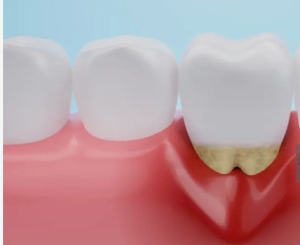What is Gum Disease? Everything You Need to Know to Protect Your Smile
If your gums bleed when you brush or floss, or if you’ve noticed persistent bad breath, you might be among millions of people experiencing gum disease—and not even know it. In fact, gum disease is so common that nearly half of U.S. adults over 30 have some form of it, according to the CDC.
But what is gum disease, really? And why is it so serious?
In this post, you’ll discover what gum disease is, what causes it, how to recognize it early, and most importantly, how to prevent or treat it before it leads to irreversible damage like tooth loss or even impacts your overall health.
What is Gum Disease? A Simple Definition
Gum disease—periodontal disease—is an infection of the tissues surrounding and supporting your teeth. It typically starts as a mild condition called gingivitis and, if left untreated, can progress to periodontitis, a more severe and destructive form.
At its core, gum disease is the result of plaque buildup—a sticky film of bacteria that forms on teeth. If not removed regularly, this plaque hardens into tartar, irritating the gums and causing inflammation.
Why Gum Disease is More Than Just a Mouth Problem
While gum disease starts in the mouth, its effects can extend far beyond. Untreated periodontitis can lead to tooth loss, bone erosion, and receding gums. But even more concerning, recent studies have linked gum disease to serious health problems such as:
- Heart disease
- Stroke
- Diabetes
- Pregnancy complications
- Respiratory infections
This connection exists because bacteria from inflamed gums can enter the bloodstream and trigger inflammation elsewhere in the body.
Gum Disease in Stages: From Mild to Severe
Let’s break down the stages of gum disease to better understand how it progresses:
- Gingivitis (Early Stage)
- Gums appear red, swollen, and may bleed during brushing or flossing
- No bone loss or irreversible damage yet
- Completely reversible with proper care
- Mild to Moderate Periodontitis
- Gums begin to pull away from teeth
- Formation of periodontal pockets that trap bacteria
- Minor bone loss may begin
- Advanced Periodontitis
- Deep pockets and severe gum recession
- Significant bone loss around teeth
- Teeth may become loose or fall out
Common Signs and Symptoms of Gum Disease
Recognizing the early warning signs is key to stopping gum disease in its tracks:
- Bleeding while brushing or flossing
- Swollen, tender, or red gums
- Persistent bad breath (halitosis)
- Receding gums (teeth appear longer)
- Loose or shifting teeth
- Pain when chewing
- Pus between teeth and gums
If you experience one or more of these symptoms, it is essential to schedule a dental visit as soon as possible.
What Causes Gum Disease?
The leading cause of gum disease is poor oral hygiene, but several other factors can increase your risk:
- Smoking or tobacco use
- Diabetes (especially if uncontrolled)
- Genetics or family history of gum disease
- Hormonal changes (pregnancy, menopause)
- Certain medications (e.g., those causing dry mouth)
- Poor nutrition (especially low in Vitamin C)
How Common is Gum Disease? (Key Statistics)
Understanding the scope of the issue helps reinforce why awareness is critical:
- 2% of U.S. adults aged 30 and older have some periodontal disease (CDC).
- 1% of adults over age 65 suffer from periodontal disease.
- Gum disease is the leading cause of tooth loss in adults.
Despite these numbers, early-stage gum disease often goes undetected because it is painless at first. This is why routine dental visits and proactive care are so important. Regular check-ups can help catch gum disease in its early stages, giving you peace of mind about your oral health.
How Gum Disease is Diagnosed
- Your dentist or dental hygienist uses several tools to diagnose gum disease:
- Visual exam for redness, swelling, and bleeding
- Periodontal probe to measure pocket depth around each tooth
- Dental X-rays to check for bone loss
- Pocket depths greater than 4mm often indicate periodontitis.
Treatment Options for Gum Disease
The treatment approach depends on the stage of gum disease.
For Gingivitis:
- Improved brushing and flossing
- Antibacterial mouth rinses
- Professional cleaning to remove plaque and tartar
For Periodontitis:
- Scaling and root planing (deep cleaning)
- Local or systemic antibiotics
- Surgical options (flap surgery, bone grafting) in severe cases
- Laser therapy in advanced practices
How to Prevent Gum Disease
Prevention is simpler and more affordable than treatment. Here’s how:
- Brush twice daily with fluoride toothpaste
- Floss or use interdental brushes at least once a day
- Use antibacterial mouthwash
- Eat a balanced, low-sugar diet
- Quit smoking and limit alcohol
- Visit your dentist every six months
N.B.: If you’re at higher risk (e.g., diabetic or pregnant), ask your dentist about more frequent checkups.
Take Control of Your Gum Health Today
Gum disease is common but is also highly preventable and treatable, especially in the early stages. Now that you know what gum disease is, how it progresses, and how to prevent it, you can confidently take control of your oral health. Remember, prevention is key, and you have the power to protect your smile.
Next Step: Book Your Gum Health Check
Not sure if you’re at risk for gum disease?
Schedule a gum health screening with a dentist today and take the first step toward a stronger, healthier smile.
Source
Seymour, R. A. (2009). Is gum disease killing your patient?. British Dental Journal, 206(10).






